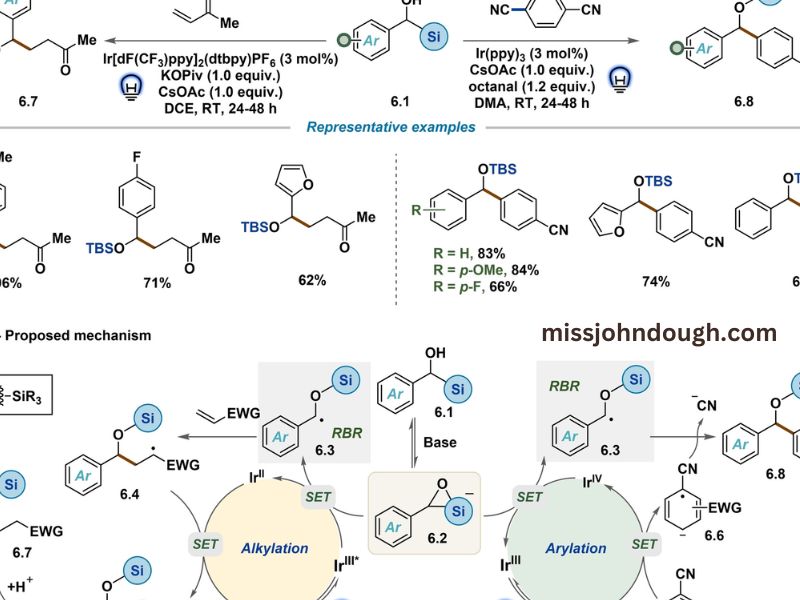In the realm of organic chemistry, comprehending reaction mechanisms is pivotal for chemists aiming to execute reactions with precision and control. David Brook’s “Mechanistic Organic Chemistry” serves as a comprehensive guide, elucidating the methodologies employed to decipher reaction mechanisms through both theoretical frameworks and instrumental techniques. This textbook delves into a broad spectrum of approaches, encompassing spectroscopic analyses, isotope effect studies, kinetic evaluations, trapping methodologies, and computational strategies.
Unlocking the Potential of “Mechanistic Organic Chemistry” by David Brook
David Brook’s “Mechanistic Organic Chemistry” is a cornerstone resource for students, researchers, and professionals diving into the complexities of organic reaction mechanisms. By combining foundational concepts with advanced analysis techniques, the book addresses a wide audience, from novices learning the basics to experts refining their methodologies. The text is celebrated for its clear explanations, illustrative diagrams, and practical applications that bridge theory with real-world chemistry.
The Significance of Reaction Mechanisms in Organic Chemistry
A profound understanding of reaction mechanisms enables chemists to predict and manipulate the outcomes of chemical reactions. By elucidating the step-by-step sequence of events at the molecular level, chemists can design reactions that are not only efficient but also selective. This mechanistic insight is crucial for advancing fields such as pharmaceutical development, where the creation of complex molecules demands precise control over chemical transformations.
Spectroscopic Studies: Illuminating Molecular Interactions
Spectroscopy plays a vital role in mechanistic studies by providing detailed information about the structure and dynamics of molecules. Techniques such as Nuclear Magnetic Resonance (NMR) and Infrared (IR) spectroscopy allow chemists to observe intermediates and transition states, offering clues about the pathways reactions follow. By analyzing spectral data, chemists can infer the presence of specific functional groups, monitor the progress of reactions, and identify transient species that are otherwise challenging to detect.
Isotope Effects: Tracing Reaction Pathways
Incorporating isotopes into reactant molecules serves as a powerful tool for probing reaction mechanisms. By substituting atoms with their isotopic counterparts, chemists can observe changes in reaction rates and equilibria, shedding light on the steps that are rate-determining. For instance, the use of deuterium, a heavier isotope of hydrogen, can reveal subtle details about hydrogen transfer processes, as the difference in mass influences vibrational frequencies and, consequently, reaction kinetics.
Kinetic Studies: Measuring Reaction Dynamics
Kinetics provides quantitative data on the speed of chemical reactions and the factors influencing them. By measuring reaction rates under various conditions, chemists can deduce the order of reactions, determine activation energies, and propose plausible mechanisms. Understanding the temporal aspect of reactions is essential for optimizing conditions in industrial processes, ensuring that reactions proceed at desirable rates while maintaining safety and cost-effectiveness.
Trapping Methods: Capturing Elusive Intermediates
Many reaction intermediates are highly reactive and exist only fleetingly, making them difficult to study directly. Trapping techniques involve reacting these intermediates with specific reagents to form stable, isolable products. By analyzing these products, chemists can infer the nature of the intermediates and the pathways leading to their formation. This approach is instrumental in validating proposed mechanisms and understanding complex reaction networks.
Computational Approaches: Modeling Molecular Behavior
Advancements in computational chemistry have revolutionized the study of reaction mechanisms. By employing quantum mechanical calculations and molecular simulations, chemists can model potential energy surfaces, predict transition states, and explore reaction pathways in silico. These computational insights complement experimental data, providing a more comprehensive understanding of chemical reactivity and guiding the design of new reactions and materials.
David Brook’s Contribution to Mechanistic Organic Chemistry
David Brook, affiliated with San Jose State University, has made significant contributions to the field of organic chemistry through his research and publications. His textbook, “Mechanistic Organic Chemistry,” published by De Gruyter, is a testament to his expertise, offering readers a structured approach to understanding the intricacies of reaction mechanisms. The book is designed to cater to both students and practicing chemists, providing a blend of theoretical knowledge and practical applications.
Conclusion
“Mechanistic Organic Chemistry” by David Brook stands as a valuable resource for those seeking to deepen their understanding of how and why chemical reactions occur. By integrating various analytical techniques and theoretical models, the book equips readers with the tools necessary to elucidate complex reaction mechanisms. This knowledge not only enhances the ability to conduct research and develop new chemical processes but also fosters a deeper appreciation for the dynamic nature of organic chemistry.


